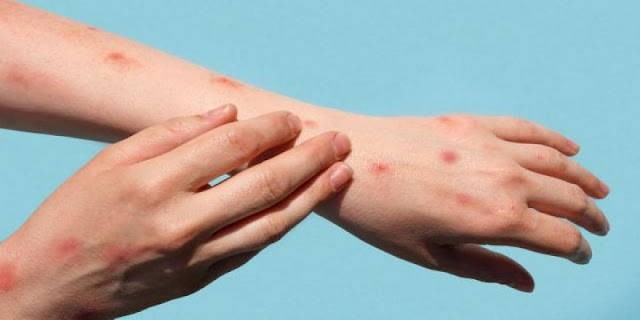TRNC Medical Association on Monkeypox disease and how it's transmitted
The Turkish Cypriot Medical Association made a statement about how Monkey Pox disease, which was detected in the TRNC after it was detected in the south, is transmitted, what its symptoms are, its treatment and ways to prevent the disease.
While the most common symptoms of the viral disease were described as "fever, headache, fatigue, widespread body aches, swelling in the lymph nodes and skin lesions", it was emphasized that swelling in the lymph nodes was the most important feature of the disease.
It was stated that the transmission is through face-to-face, long-term and close contact with large droplets, the symptoms appear after 6-13 days, rarely 21 days later, and those with a history of contact should be closely monitored for 21 days.
It was also stated that the diagnosis was made by the isolation of virus DNA by PCR to be made from the samples to be taken from the lesions of the cases.
Ways of protection
Ways of protection from the disease, “Staying away from close and skin contact with infected people; not to use common items such as towels, sheets, glasses with these people; regular hand washing; vaccination of risk groups”.
The statement of the Cyprus Turkish Medical Association is as follows:
“Monkeypox disease (mpox) is a viral disease that was first detected in monkeys on the African continent in 1958 and then in humans in 1970. The causative agent is mpox virus (Monkeypox Virus), which is a DNA virus. It is a zoonotic infectious disease that is frequently found in rodents such as squirrels, rats and mice and is transmitted from them to humans.
While the cases seen in previous years were seen in the African continent or people coming from Africa, this year it has attracted the attention of the World Health Organization and the health world when it started to be seen in Europe and America. Since November 2022, the World Health Organization recommends using the term 'mpox' for monkeypox.
Is there Mpox disease in Cyprus?
This viral infection, which was detected in the south of Cyprus in August, has now been proven to be present in the north as well.
How is Mpox disease transmitted?
It is known that human-to-human transmission is mainly through large droplets, namely face-to-face, long-term and close contact. In addition, soiled clothes, towels, sheets, etc. transmitted by close contact with materials. It is transmitted by contact with invisible cracks/scratches on the skin of healthy people, mucous membranes (mouth, nose, eyes) or respiratory system. In addition to these, bites from an infected animal, scratching, contact with blood and body fluids or meat of the animal, direct contact with lesions or contact with materials contaminated with all these can occur.
What are the symptoms of Mpox disease?
Mpox is a different disease from chickenpox. Swelling in the lymph nodes is one of the most important features of mpox disease. Mpox disease usually occurs 6-13 days after exposure, but rarely after 21 days. Therefore, those with a history of contact should be closely monitored for 21 days. The most common symptoms are fever, headache, fatigue, widespread body aches, swelling of the lymph nodes and skin lesions.
Skin lesions occur more on the face, arms and legs than on the trunk and appear 1-3 days after the onset of fever. Rashes can be seen on the palms of the hands, soles of the feet, inside the mouth, genital area and eyes. The lesions begin as flat red, then swell and become filled with white fluid. It heals spontaneously in 2-4 weeks. It can cause severe infection in immunocompromised individuals and children.
How is Mpox disease diagnosed?
The diagnosis is made by the isolation of virus DNA by PCR to be made from the samples taken from the lesions of the clinically suspicious cases.
Is there a cure for Mpox disease?
No specific treatment for Mpox disease has been approved. However, the use of tecovirimate, brincidofovir, cidofovir, and specific immunoglobulin is in clinical investigation. Skin care and treatment of bacterial infections to be added to it can be done.
In 2019, the FDA approved JYNNEOSTM (also known as Imvamune and Imvanex) as a vaccine for use for Mpox. It is effective against live, attenuated (attenuated) pox and monkeypox. In addition, ACAM2000 is recommended by the FDA and CDC for extended access new drug applications. Vaccination is recommended especially for people with a history of contact and high risk of contact.
What should be done in the fight against Mpox disease?
The Ministry of Health should ensure that vaccines and treatments are freely available. Vaccination of sex workers and people living in public places should be planned after contact in our country. After providing the vaccine, the Ministry of Health should first provide it to risk groups and contacts immediately and free of charge.
What are the ways to avoid Mpox?
Avoiding close and skin contact with infected people; not to use common towels, sheets, glasses, etc. with infected people; regular hand washing and vaccination of risk groups.”
Yeniduzen









No comments
Thanks for viewing, your comments are appreciated.
Disclaimer: Comments on this blog are NOT posted by Olomoinfo, Readers are SOLELY responsible for their comments.
Need to contact us for gossips, news reports, adverts or anything?
Email us on; olomoinfo@gmail.com